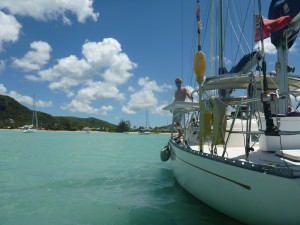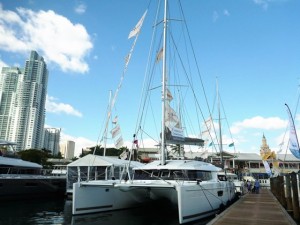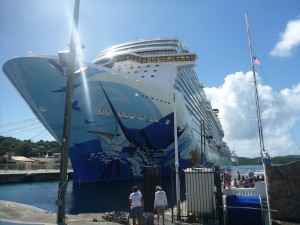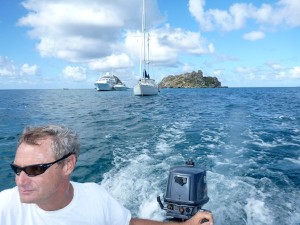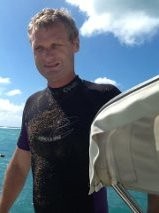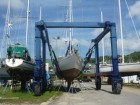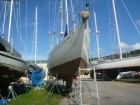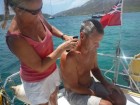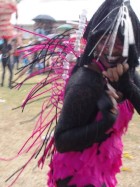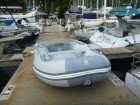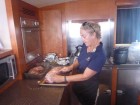Yacht Larus
A slow circumnavigation
| Vessel Name: | Larus |
| Vessel Make/Model: | Slipper 42 |
| Hailing Port: | Southampton |
| Crew: | Tim Chapman and Nancy Martiniuk |
| About: | Sailing together since 1988 |
| Home Page: | Http://www.sailblogs.com/member/yachtlarus |
18 June 2016
Blog is moving
There is no perfect blog site for those of us who have almost permanent internet challenges, however we're moving from Sailblogs now to a new blog site. The posts here will remain but all future posts will be at;
21 February 2016
Every cloud has a silver lining
It came to light during the Boat show that the boat's insurers were insisting that the delivery skipper had an Ocean endorsement on their Yachtmaster ticket. Tim doesn't have this. He's had his Yachtmaster for over 20 years and in those days Yachtmaster Offshore was the highest level of certification. [...]
03 December 2015 | Nanny Cay, Tortola, BVI
Blog 78 - Cruising once again
Having just reread our last blog, I'm pleasantly surprised to find that it was pretty much spot on.
03 June 2015 | Antigua
Work, Work and more work.
It is an awfully long time since our last blog and we really haven't been doing much other than working.
27 October 2014
On the hard Chaguaramas and crusing in Tobago
Spring this year, April to July, found us working pretty hard. Summer found us spending our hard earned gains treating Larus and ourselves to some TLC. While Tim and I visited friends and family in Canada and the UK, we left Larus on the hard in Coral Cove Marina, Chaguaramas, Trinidad in the care [...]
19 October 2014 | Trinidad
New paint job
Couldn't resist painting the boat at Trinidad prices. Looking gorgeous in a slightly warmer shade of white. Also rolled on 4 more coats of Coppercoat for good measure.
04 July 2014 | Bequia
We’re still here!
And by ‘here’ I mean, Guadeloupe, St Vincent and the Grenadines, St Marten and the British Virgin Islands. We have been working quite a lot over the last few months, and are currently in the Grenadines doing nothing but looking after Larus and pleasing ourselves.
02 March 2014 | Chaguaramas, Trinidad
The Run Up to Carnival
Trinidad is obsessed with Carnival. I've read that between Carnivals, the Trini's are either reminiscing about the previous Carnival or planning for the next.
24 January 2014 | Bequia
Charters and Bequia
Both Tim and I have been out on charter. I worked for two weeks in Guadeloupe on a 70' Flagship catamaran while Tim got called out to a short notice charter in the BVI.
Changing Seasons
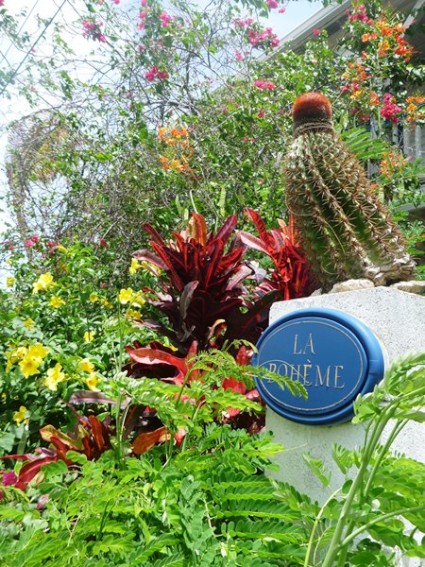
The most obvious change is the amount of rainfall we are now getting. It is very much like someone flicked a switch ‘ON’ at the end of April.
Our first experience was in Tobago. It had been an unusually dry winter and oh so very hot. From morning and evening, the local people would be swimming in the water. Come eleven o’clock, when the trees lining the beach no longer offered any shade, the numbers would dwindle. Even with a beach umbrella, my sister Laura and I found it too hot and were soon mimicking that locals.
Then one day it went from dry and dusty and to the streets streaming with water, the storm drains full of water and the goats tethered in open looked very sad and wet. As much as I would have loved photos of all this, it really was too wet and windy to have the camera out.
Now, in the first couple weeks of June, the weather is becoming more predictable in its unpredictability.
These wet periods come through in waves, a depression moves though the area bringing wind and rain. A tropical wave (or tropical disturbance) is an unorganized mass of thunderstorms with very little, if any, organized wind circulation. (Wikipedia)
We’re in the middle of one right now. We have great bursts of rain which come and go with great irregularity. Do not think that just because you have a lovely clear sky, you can waltz off ashore and leave all the hatches open. Sometimes it rains so hard that the hatches have to be ‘dogged down’, meaning fully closed and sealed tight rather than left in the vent position. The force and quantity of the rain bouncing off the deck will make its way in to the boat.
With the hatches all closed, it can get very hot and stuffy inside. Thankfully, the showers don’t last long. It does get tedious in the night, - waking up to rain, closing hatches, waking up in sauna, opening hatches, waking up to rain…
A more subtle change is the amount of daylight we are now seeing. Sunrise is a little earlier now and sunset a little later so we are seeing around thirteen hours or so of daylight.
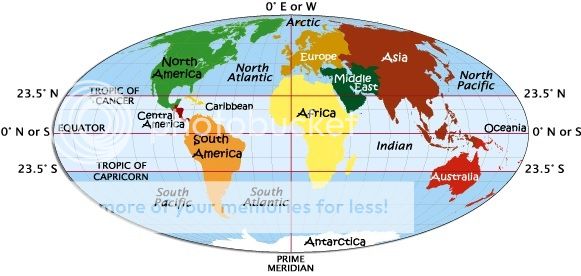
Image borrowed from www.studyzone.org
Antigua is 17°0’N, so we’re not on the equator, but much nearer to it than we’re used to. London England is 51°32’N and Toronto is 43°42′N and their days are much shorter in the winter months and much longer in the summer.
June 1st is also the beginning of the Hurricane Season and the number of boats in English and Falmouth Harbours has plummeted as boats go north to the US, South to the Grenadines, Grenada and Trinidad or East and back across the Atlantic to the Azores and Europe.
There are very few boats left in either harbour and those who stay have a number of options that will satisfy the insurers.
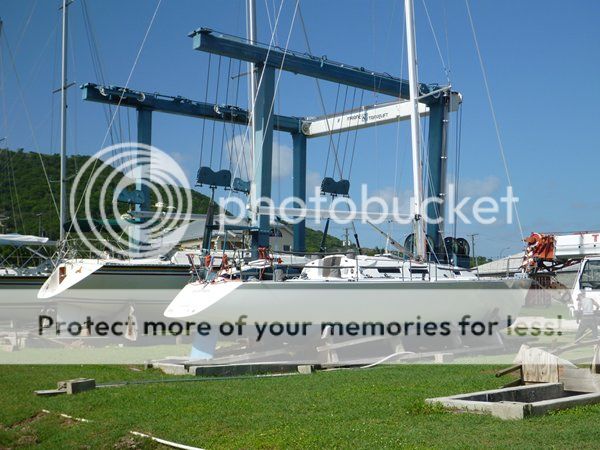
These boats are resting in cradles set into trenches, though cradles can just be on the hard in a marina or boatyard.

English Harbour has been a Hurricane Hole since Lord Nelson’s time. This is Old Bob. She has been driven bow first in to the mangroves. She will have stern anchors and lines tied to roots deep in the mangroves. One gentleman we spoke to told us trekking in land with his lines and finding a cannon planted upright among the trees that he tied onto to. At some point, anything above deck that can be removed is. This includes: sails, bimini, dodgers, halyards and even the boom is removed and lashed on deck. Car tyres replace fenders which would blow in the wind and all hatches would be covered and secured.
The gentleman who found the cannon told us that the biggest worry is from boats that come late - when a hurricane is imminent. They tie on to anything including your boat. His boat weathered the storm and what made the biggest impression on him was what appeared to be tea leaves driven into every crack and crevice on the boat. The island was completely defoliated by this particular storm and the ‘tea leaves affect’ was simply caused by flying debris.
We are heading south for the summer and will spend our time between Trinidad and Grenada.
Flora-wise, here in Antigua, the flowers, trees and bushes are bigger and brighter.

The wonderful trees with the orange blossoms, Delonix regia also known as Royal Poinciana or Flambouyant Tree or Flame Tree or Peacock Tree, keep blooming, seeming to get bigger and brighter every time I look.

The flowering vines at the rubbish tip are threatening to take over! This is where I saw my first and only mongoose in Antigua. Smacks of the black bears in Northern Ontario, hanging out at the dump for an easy meal.
Mangos are now dangling from the mango trees and we’re beginning to get ripe ones sold in the markets and along the streets.
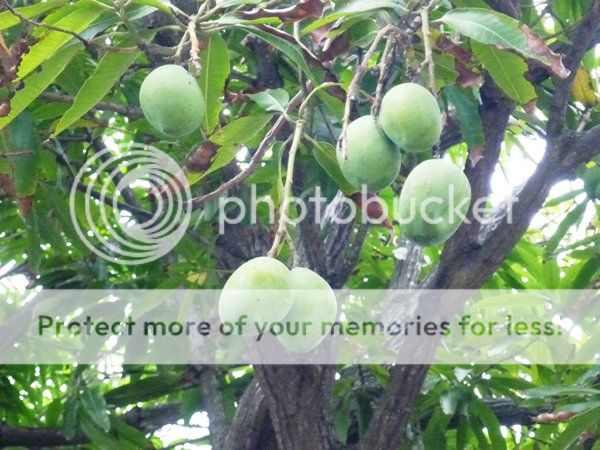
There are a huge number of varieties of mango. There is even one call Antigua Stringy Mango. It’s small and grows everywhere and are quite a fight to eat being so stringy. You will see people eating them on the street, though how they do it without dental floss is beyond me. When ripe the skin will peel off in one piece, leaving a slippery, fibre-y, sweet flesh to be gnawed from the stone.
I eat them over the sink, but yesterday I saw three young guys in the back of a car eating them. You obviously improve with practice.
The big meaty mangos that you can slice the cheeks off of are just arriving on the scene. They are double the price of the stringy ones, but well worth it. Patrick on Foxfire, brought me the most beautiful mangos, blemish free and almost fully ripe. After a waiting impatiently for them to have the right ‘give’ when poked, they were absolutely luscious. I haven’t had the good fortune to find any as perfect, but at least now I have a mango benchmark.
We have noticed how expensive the fruit is here. We probably are paying a premium as non-locals, but we are paying more for mangos and pineapples grown here on the island that we were for the same things back in the UK.

Budget Centre Supermarket – where the locals and I shop. I do go the all singing all dancing supermarket – Epicurean – for certain things that I can’t get elsewhere occasionally.
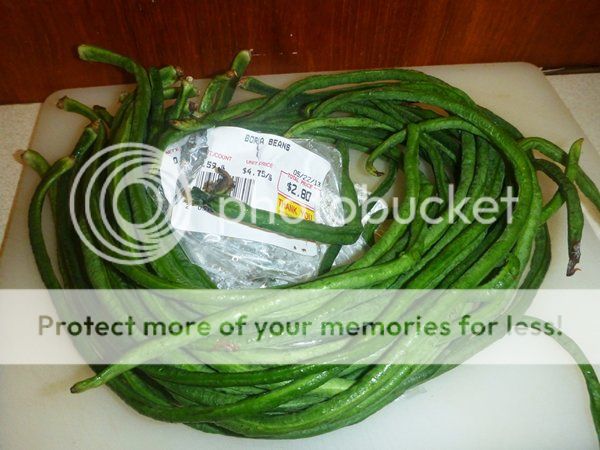
I do try to eat the local produce and these Bora beans were wonderful . It pains me to say that I cannot cook okra in a way that makes me want to have it again. Other local produce I do enjoy are butternut squash, herbs, lettuce, spring onions, pak choi, green peppers (not the red or yellow which are imported and go off in the blink of an eye) , small green bananas, mangos and, just recently, little local pineapples. I’m not sure if the tomatoes and onions are local because they are often refrigerated, which is really too bad as it isn’t good for their taste or longevity.
There are lots of greens, roots and lumpy nobbly vegetables, like Cristophene, which I still need to try or need to try again.
Even in the local supermarkets many things are surprisingly expensive as many products are imported. It does make me wondered how much the farmers here are making exporting to the big supermarket chains in North America and Europe. The Caribbean islands tend to be quite poor and this can’t be helping.
Just as an aside – there is no recycling in much of the Caribbean. The infrastructure is too expensive for a small island or group of islands to support. I think there should be a Caribbean wide recycling initiative – local collecting and sorting and then transportation by boat to an island or islands that are developed to process it. I’m sure counties like Haiti would benefit from becoming a recycling hub.
Right now, one has to wonder, where IS all the rubbish going?
Fauna-wise, the birds have been a key indicator that spring is in the air.

These Caribbean Martins, and many of their friends, were determined to nest in our boom.
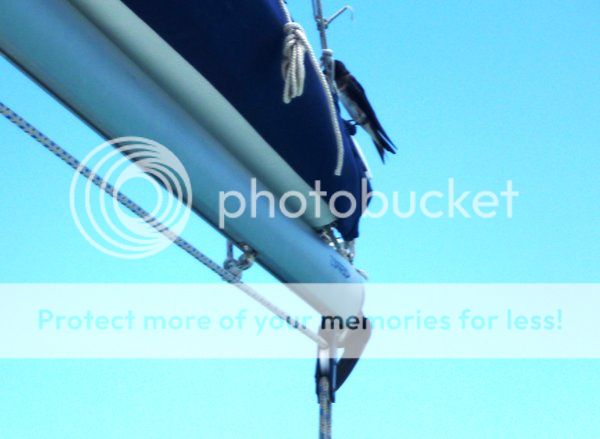
A pair of Martins who are having a very close look while we were anchored off Jolly Harbour.
